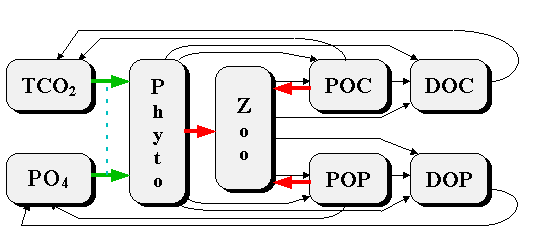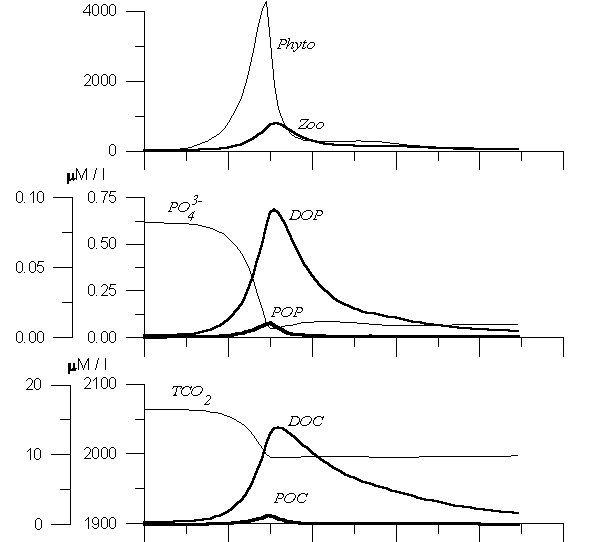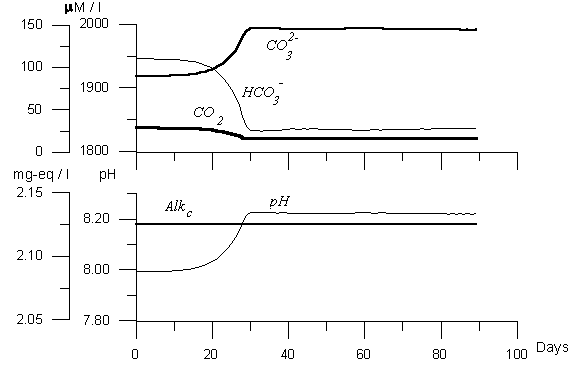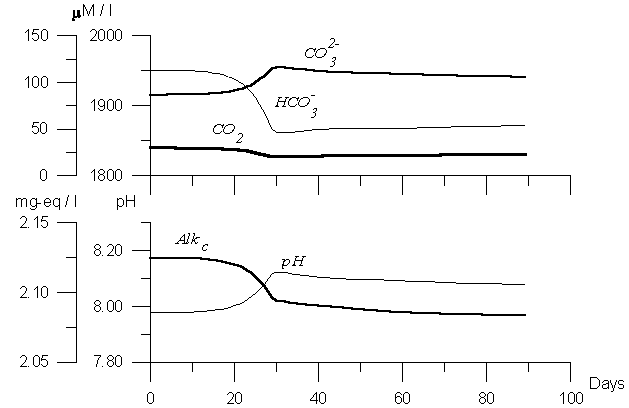
The goal of this work is to study the origin and interrelationships of the different processes affecting the carbonate system transformation during the bloom. Paticularly the biogenic carbonates formation was described and the numerical estimates of this process intensity during the phytoplankton intensive production period were obtained.
The carbon chemical-biological cycle, air-water exchange and carbonate system transformation were described in the model. A special iteration scheme was used to describe the carbonate system balancing after the carbon dioxide consummation took place.




On the base of modeling it was shown that the amount of potentially precipitated during the bloom period CaCO3 should be up to 20 mM l-1. The changes of carbon alkalinity can reach 0.030 mg-eq l-1. The differences of carbonate system parameters behavior including CaCO3 formation is significant enough to be measured during the field investigations of the standard carbonate system parameters with the modern technique accuracy.